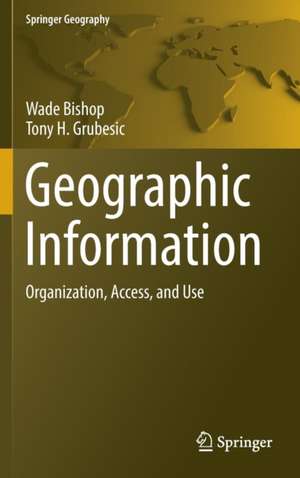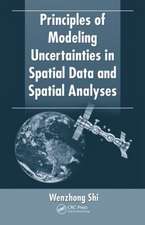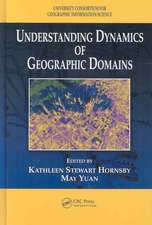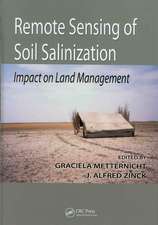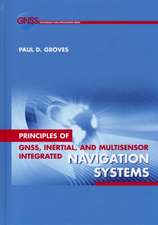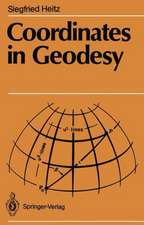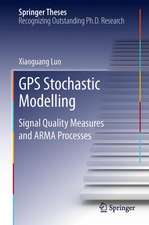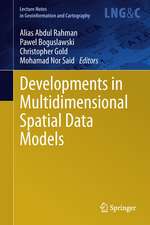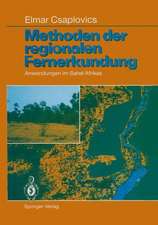Geographic Information: Organization, Access, and Use: Springer Geography
Autor Wade Bishop, Tony H. Grubesicen Limba Engleză Hardback – 8 noi 2016
| Toate formatele și edițiile | Preț | Express |
|---|---|---|
| Paperback (1) | 941.50 lei 6-8 săpt. | |
| Springer International Publishing – 27 iun 2018 | 941.50 lei 6-8 săpt. | |
| Hardback (1) | 947.50 lei 6-8 săpt. | |
| Springer International Publishing – 8 noi 2016 | 947.50 lei 6-8 săpt. |
Din seria Springer Geography
- 18%
 Preț: 961.55 lei
Preț: 961.55 lei - 15%
 Preț: 665.01 lei
Preț: 665.01 lei - 18%
 Preț: 792.72 lei
Preț: 792.72 lei - 20%
 Preț: 564.76 lei
Preț: 564.76 lei - 15%
 Preț: 533.88 lei
Preț: 533.88 lei - 18%
 Preț: 1224.36 lei
Preț: 1224.36 lei - 18%
 Preț: 949.73 lei
Preț: 949.73 lei - 18%
 Preț: 1115.46 lei
Preț: 1115.46 lei - 18%
 Preț: 1115.46 lei
Preț: 1115.46 lei - 18%
 Preț: 730.35 lei
Preț: 730.35 lei -
 Preț: 441.36 lei
Preț: 441.36 lei - 18%
 Preț: 1004.19 lei
Preț: 1004.19 lei - 18%
 Preț: 949.55 lei
Preț: 949.55 lei - 15%
 Preț: 644.30 lei
Preț: 644.30 lei -
 Preț: 398.74 lei
Preț: 398.74 lei - 18%
 Preț: 955.25 lei
Preț: 955.25 lei - 18%
 Preț: 787.15 lei
Preț: 787.15 lei - 18%
 Preț: 1003.38 lei
Preț: 1003.38 lei - 18%
 Preț: 897.14 lei
Preț: 897.14 lei - 18%
 Preț: 1117.03 lei
Preț: 1117.03 lei - 18%
 Preț: 1120.18 lei
Preț: 1120.18 lei - 18%
 Preț: 1128.08 lei
Preț: 1128.08 lei - 18%
 Preț: 726.37 lei
Preț: 726.37 lei - 18%
 Preț: 964.54 lei
Preț: 964.54 lei - 15%
 Preț: 647.40 lei
Preț: 647.40 lei - 15%
 Preț: 646.62 lei
Preț: 646.62 lei - 15%
 Preț: 640.71 lei
Preț: 640.71 lei - 18%
 Preț: 2154.04 lei
Preț: 2154.04 lei - 15%
 Preț: 648.05 lei
Preț: 648.05 lei - 24%
 Preț: 1118.07 lei
Preț: 1118.07 lei -
 Preț: 391.61 lei
Preț: 391.61 lei - 18%
 Preț: 961.55 lei
Preț: 961.55 lei - 18%
 Preț: 948.16 lei
Preț: 948.16 lei - 18%
 Preț: 1563.24 lei
Preț: 1563.24 lei - 15%
 Preț: 647.27 lei
Preț: 647.27 lei - 24%
 Preț: 857.90 lei
Preț: 857.90 lei - 24%
 Preț: 1139.69 lei
Preț: 1139.69 lei - 5%
 Preț: 1116.73 lei
Preț: 1116.73 lei - 20%
 Preț: 551.31 lei
Preț: 551.31 lei - 15%
 Preț: 637.13 lei
Preț: 637.13 lei - 15%
 Preț: 642.03 lei
Preț: 642.03 lei - 18%
 Preț: 940.39 lei
Preț: 940.39 lei -
 Preț: 395.09 lei
Preț: 395.09 lei -
 Preț: 365.45 lei
Preț: 365.45 lei - 18%
 Preț: 960.13 lei
Preț: 960.13 lei - 24%
 Preț: 642.99 lei
Preț: 642.99 lei
Preț: 947.50 lei
Preț vechi: 1155.48 lei
-18% Nou
Puncte Express: 1421
Preț estimativ în valută:
181.30€ • 189.29$ • 150.05£
181.30€ • 189.29$ • 150.05£
Carte tipărită la comandă
Livrare economică 04-18 aprilie
Preluare comenzi: 021 569.72.76
Specificații
ISBN-13: 9783319227887
ISBN-10: 3319227882
Pagini: 400
Ilustrații: XVI, 214 p. 24 illus., 16 illus. in color.
Dimensiuni: 155 x 235 x 14 mm
Greutate: 0.5 kg
Ediția:1st ed. 2016
Editura: Springer International Publishing
Colecția Springer
Seria Springer Geography
Locul publicării:Cham, Switzerland
ISBN-10: 3319227882
Pagini: 400
Ilustrații: XVI, 214 p. 24 illus., 16 illus. in color.
Dimensiuni: 155 x 235 x 14 mm
Greutate: 0.5 kg
Ediția:1st ed. 2016
Editura: Springer International Publishing
Colecția Springer
Seria Springer Geography
Locul publicării:Cham, Switzerland
Public țintă
ResearchCuprins
Introduction.- Geographic Information, Maps, and GIS.- 0◦ : A Primer on Geographic Representation.- Policy.- Metadada.- Geoweb.- Discovery and Fitness for Use.- Meeting Information Needs.- Data Lifecycle.- Education.
Notă biografică
Wade Bishop is an assistant professor in the School of Information Sciences at the University of Tennessee, Knoxville. Bishop has an M.L.I.S. from the University of South Florida and a Ph.D. from Florida State University. His research focus is on geographic information (GI) organization, access and use, as well as the study of GI occupations, education, and training. He has other research expertise that includes physical access for users to U.S. public libraries (using Geographic information Systems (GIS)) and the evaluation of many other services and resources in academic and public libraries. He has professional experience as an assistant professor, teacher, academic librarian, graduate research associate, teaching assistant, and instructor. In 2011, he received an IMLS grant titled Geographic Information Librarianship (GIL), with Tony Grubesic, to create and deliver coursework to prepare students with the knowledge, skills, and abilities to locate, retrieve, analyze, and make geospatial data accessible.
Tony H. Grubesic is Professor of Policy Analytics at Arizona State University, where he is also Director of the Center for Spatial Reasoning & Policy Analytics. He has previously held academic appointments at Drexel University, Oregon State University, Indiana University and the University of Cincinnati. His research and teaching interests are in geographic information science, regional development and public policy evaluation. Author of over 120 research publications, his recent work focuses on spatial analytics and data uncertainty, neighborhood dynamics, telecommunications policy and air transportation systems. Grubesic obtained a B.A. in Political Science from Willamette University, a B.S. in Geography from the University of Wisconsin-Whitewater, a M.A. in Geography from the University of Akron, and a Ph.D. in Geographic Information Science from Ohio State University.
Textul de pe ultima copertă
This book explores both the background and present challenges facing the preservation of geographic information (GI) focusing on the roles of librarians, archivists, data scientists, and other information professionals in the creation of GI records; geospatial data discovery, geographic information policy, and metadata creation; and a look beyond current technology and data formats for long-term preservation.
Caracteristici
Provides a brief history of geographic information creation and storage Chronicles a variety of resources to locate imagery, data, and maps Discusses metadata value and creation in detail Provides a recent chronology of geographic information policy Outlines the roles of librarians, archivists, data scientists, and other information professionals in the past, present, and future of geographic information preservation, organization, access, use, and analysis
